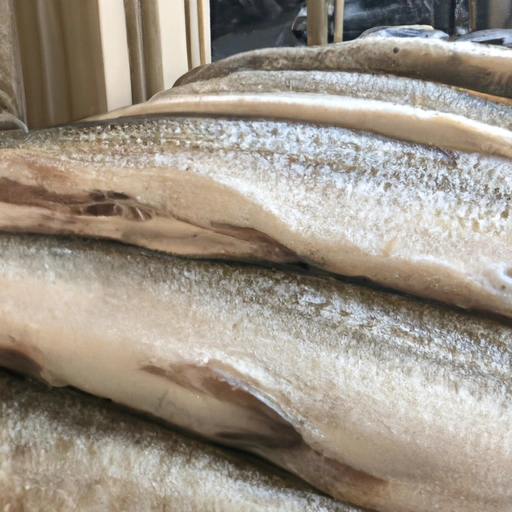Haddock
Description

Haddock is a saltwater fish belonging to the cod family, commonly found in the North Atlantic Ocean. It is a staple in both American and European cooking, appreciated for its lean, white flesh and subtle, slightly sweet flavor. When cooked, haddock has a delicate flake and a texture that can range from moist and tender to firm, depending on the preparation method.
Common uses
Haddock is frequently used in a variety of dishes, from simple home cooking to gourmet preparations. It serves as a versatile base for many recipes, accommodating various spices and accompaniments.
Nutritional value
Calories
Per 3.5 ounces (100 grams), haddock contains approximately 90 calories.
Protein
Haddock is an excellent source of protein, providing about 20 grams per 3.5 ounces (100 grams).
Fat
This fish is very low in fat, with less than 1 gram per 3.5 ounces (100 grams).
Carbohydrates
Haddock has no carbohydrates, making it a suitable addition to low-carb diets.
Vitamins
It provides a good source of certain vitamins like B6 and B12.
Minerals
Haddock is rich in minerals such as selenium, phosphorus, and magnesium.
Health benefits
The lean protein and nutrient-rich profile of haddock support muscle building and maintenance. The presence of omega-3 fatty acids, although lower than in fatty fish, contributes to cardiovascular health. The vitamins and minerals in haddock help in maintaining energy levels, bone health, and a well-functioning immune system.
Potential risks
Consuming haddock poses minimal health risks. However, like all seafood, there is a risk of contamination with heavy metals such as mercury, though haddock is generally considered to have lower mercury levels compared to other fish. Always ensure proper cooking to avoid foodborne illnesses.
Common recipes
Haddock is commonly used in recipes such as fish and chips, seafood chowder, fish cakes, and baked fish dishes with various herbs and seasonings.
Cooking methods
It can be prepared using a range of techniques including baking, grilling, broiling, frying, poaching, and steaming, allowing for diverse culinary exploration.
Pairing with other ingredients
Haddock pairs well with a variety of flavors, including lemon, herbs like dill and parsley, buttery sauces, and is often accompanied by potatoes, rice, or steamed vegetables.
Summary
Haddock is a widely enjoyed fish known for its fine flavor and adaptability in numerous recipes. Whether featured in traditional European dishes or American seafood feasts, it offers a bounty of nutritional benefits and lends itself well to a multitude of cooking styles. Its historical significance and culinary versatility make haddock a cherished ingredient in kitchens around the world.